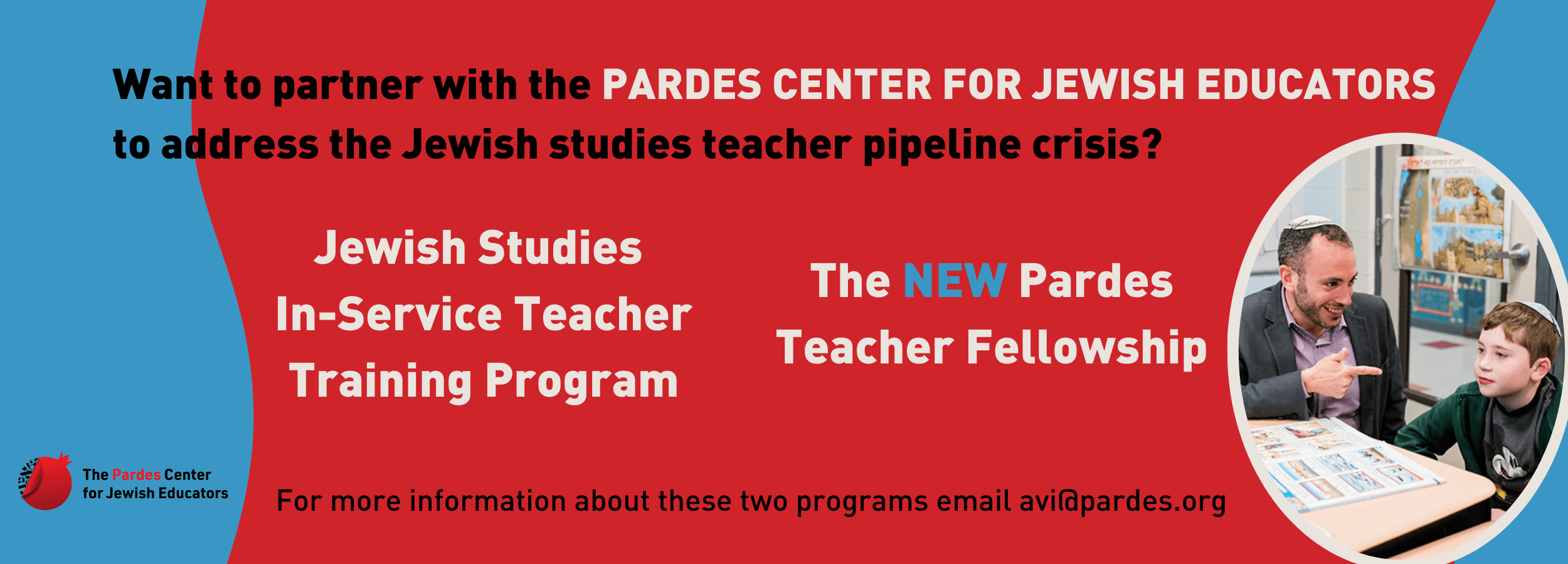Building the Jewish Experience: A Synergy Between School and Home

Ira Glasseris the director of Jewish life and learning at Rodeph Sholom School in New York City. He is a graduate of The iCenter Graduate Program in Israel Education at George Washington University and received a master’s in adolescent education from Hunter College.
For many, a Jewish day school is the epicenter that shapes the Jewish identity and experience of its students. However, it cannot do so in isolation and must be in partnership with families. Schools, an extended Jewish community, are impacted by the diverse experiences and perspectives of their student body. Schools afford students the opportunity to explore and celebrate their Jewish identity, culture, and religious practices, and to learn from one another. At the same time, the shared school experience provides a foundation for families to build upon at home and within a community, with students as the conduit. I would argue that a magical synergy takes place when students are able to enrich Jewish experiences with their families by bridging school and family. This not only broadens our students’ understanding of the Jewish world, but these shared experiences also nurture a sense of belonging and enhance the lives of students and families outside of school. Throughout this essay, I will provide examples from two very different schools—Mercaz Academy, a coeducational modern Orthodox day school on Long Island, and Rodeph Sholom School, a Reform day school affiliated with its sister synagogue Congregation Rodeph Sholom, located in Manhattan.
Home as school, school as home
Children’s curiosity drives one of the most widely practiced traditions in the Jewish world. Spanning religious observance and geographic location, the Passover Seder hinges on the youngest child asking the Four Questions. This can serve as a prototype for children’s questions shaping the experience. When parents support their children’s learning, encouraging them to share their insights, reflections, and questions, they help their children become bridges between the home and school.
In shifting the focus from the family to the school, schools should create environments in which the students feel that it is their second home. In that home, students explore opportunities to reflect upon, strengthen, and celebrate their Jewish identity. Student-centered holiday celebrations during the school day and more family-centered ones after school hours help to build seamless transitions between the school and the home. One way that schools can help build the sense of “home” is by marking significant moments in the students’ lives. At Rodeph Sholom School, when students become Bar or Bat Mitzvah (or on the anniversary of those events) they join with the fourth grade tefillah to read the Torah for their younger counterparts, initiating the fourth-graders into the path upon which they are embarking, and providing the older students with an opportunity to exercise their new adult status. And because of the connection with the shul, their entry to Bar-Bat Mitzvah is marked publicly with family as an extension of what they are doing in school.
Engaging sameness and difference
There are multiple opportunities to engage families more broadly regardless of their denominational orientation. Mercaz Academy hosts a child-centered Hanukah celebration for the entire school community, complete with candle-lighting and a party, where alumni join in to lead the younger students and their families through the rituals. Here, the long-term connection with, and impact on, alumni is palpable, as graduates lead the younger students and families in the rituals. Similarly, at Rodeph Sholom, the partnership between school and shul is maximized as they bring together the broader community to celebrate Hanukah, while ensuring that different age groups are appropriately engaged.
While schools provide for shared experiences, they are not the sole source for ritual and practice. In most schools there is diversity amongst the families—whether it be rooted in ethnicity, denomination, or Jewish commitment—so that a school-home partnership must acknowledge, respect, and include that diversity. Regular bilateral communication is essential, and schools can find ways to support the family practice by providing resources. These can include sources to study at home, reflections on tefillah, intergenerational conversation starters, and materials for exploring the weekly Torah reading. In doing so, the schools shift the locus of the Jewish educational experience from the school to that of a shared one with the home.
This illuminates a sensitive dynamic between practices that are taught in schools and the ways in which each individual family observes traditions and religious practices. In the best of cases, schools provide opportunities to bring together the different experiences of students outside of school while families build upon the broader exposure their children experience in school.
Spiraling the curriculum
For this to be done well, aside from clear and open communication, core educational values of teaching Judaic topics such as Shabbat, holidays, and parashat hashavua, must align with the individual school’s values. Beyond that, three keystones can help navigate the complex relationship.
- What is the story of the Jewish people? What are the experiences which connect the Jewish people?
- How do we apply the messages of Judaism—Shabbat, holidays, and Torah—to enrich and understand our lives in the twenty-first century?
- How do Judaism and Jewish thought and practice provide particular pathways toward the universal?
Thankfully, the Jewish canon is incredibly rich. Cyclical topics that allow students to engage on deeper levels are easy to appropriately scaffold. Will there be some repetition of concepts? Of course. But to do so with intention allows the content to be appropriately spiraled and allow students to uncover deeper levels of meaning.
Let’s take parashat hashavua as an example. This is typically taught, repeatedly, in every grade from kindergarten through eighth grade. At Mercaz Academy, students bring what they learned in their Judaics classes to the Shabbat dinner table—whether it be a synopsis of the parashah with theme-related projects or sharing deeper insights about the parashah explored in class, as age-appropriate. Conversations at the Shabbat table touch on the broader values and lessons we can learn from the parashah. At Rodeph Sholom School, a spiraled curriculum for hagim builds on prior knowledge from year to year, layering on complexity as students mature. As each year progresses, students dig further into biblical commandments, examine specific customs, and study Talmudic discussions. Early childhood students learn the foundational concepts and rituals of the holiday, elementary students learn the deeper meaning behind those rituals, and middle school students closely study the related Torah, Haftarah, and additional readings. In both of these schools, planned intentionality and curriculum help avoid the sense of “we did that last year” while reviewing to reinforce prior learning.
Concluding thoughts
How Jewish life and Judaism live in the air of a school, and the ways that a school’s educational program develops a student’s cognitive, affective, and behavioral growth, connecting the head, heart, and hand, are a critical component of building the Jewish experience. Activities which bring grades together and build bonds across grade levels build a sense of community and family, and within that family the celebrated traditions take on additional significance. The school becomes the proverbial “village” that nurtures and raises the child alongside the parents, and helps to foster identity, practice, and a sense of joy linked to their Jewish lives. As schools embrace the diversity amongst their student body, they become enriched, and they enrich the students’ “home-Judaism” as they affirm it. The synergy between the school and the home is what creates the magic that will serve the students for many years after their formal Jewish schooling ends.



Ira Glasser is the Director of Jewish Life and Learning at Rodeph Sholom School in New York City. He is a graduate of The iCenter Graduate Program in Israel Education at George Washington University and received a Master’s in adolescent education from Hunter College.
Reach 10,000 Jewish educational professionals. Advertise in the upcoming issue of Jewish Educational Leadership.




